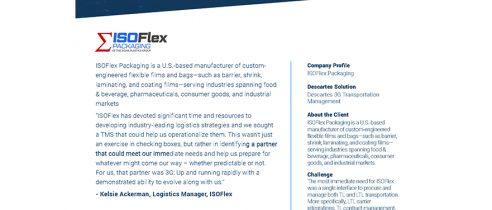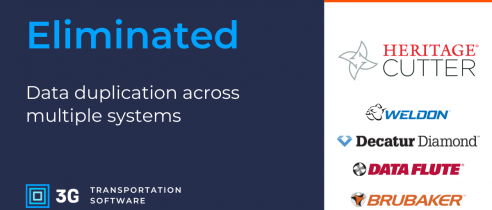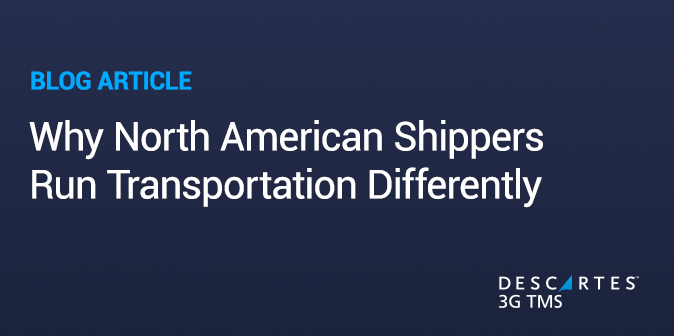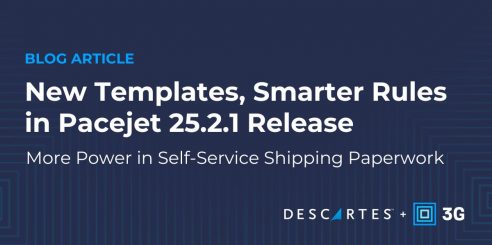As 2025 moves into its final quarter, transportation leaders are making decisions that will shape both peak season performance and preparations for 2026. The 9th Annual Descartes Transportation Management Benchmark Survey highlights how North American (NA) and European transportation leaders view the role of transportation management, and uncover which capabilities, technologies and competitive strategies/tactics are having the greatest impact on transportation operations and provide an outlook on future transportation IT investment. In this blog, we will dig deeper into the data to highlight North American shipper responses and how they differ from their European peers. These differences reflect the region’s operating realities: longer distances, higher exposure to fuel volatility, and the complexity of cross-border trade.
Understanding where these distinctions appear helps logistics leaders benchmark their own practices within their geography and plan for the year ahead.
Below are eight patterns that stand out in North America, along with practical considerations for your operations.
1. Capacity — Greater reliance on dedicated fleets
Longer hauls, the memory of tight capacity a few years ago, and high service requirements may be the reason that private/dedicated fleets are more popular in North America. The survey found that 47% of shippers in the region use private or dedicated fleets, compared to 37% in Europe. Private/dedicated fleets offer a measure of stability when market conditions shift. Consider whether your current fleet mix leaves you too exposed to outside capacity swings.
2. Costs — Tariffs and inflation weigh more heavily
Every tariff change or fuel spike stretches further across North America’s long-haul freight and mainly import-reliant networks. Shippers in the region cite tariffs (44%) and inflation (39%) as their most impactful changes over the next 5 years, compared to European shippers noting tariffs at 30% and inflation at 29%. This higher sensitivity stems from greater exposure to international trade rules and the impact current economic conditions have on prices for component goods and materials needed to keep trucks running.
This means margins compress faster, and cost shocks ripple quickly through budgets. Use your Transportation Management System (TMS) to build tariff, fuel, and surcharge scenarios so teams can respond quickly to shifting costs.
3. Growth — Confidence in steady expansion
Most leadership teams for North America shippers are planning for incremental, dependable gains rather than dramatic swings. Seventy percent (70%) of NA shippers expect 5–15% growth in the next two years, versus 64% of European shippers. This outlook reflects the region’s large consumer base and relatively stable demand patterns, especially for staple items, even when global markets are volatile.
The implication is important: even modest, reliable increases can strain capacity and workflows if scaling lags behind. Evaluate whether your processes and staffing can scale with incremental growth before volume begins to strain the system.
4. Collaboration — More data is being shared across the supply chain
North American shippers are extending transportation data further into their networks. Seventy percent (70%) share it with supply chain operations, and over half extend it to suppliers, compared to much smaller proportions reported by European shippers (49%, and 45% respectively). This variance may reflect the greater complexity of North American networks and more demand for real-time visibility.
Earlier visibility gives partners more time to adjust, which reduces the chance of last-minute disruption. Look for one additional stakeholder—supplier, planner, or customer—who could improve performance with access to your transportation data.
5. Value — Cost control balanced with service differentiation
Transportation in North America is increasingly measured on two fronts: efficiency and service. Seventy-two percent (72%) of NA shippers track cost per shipment and 55% also measure transportation’s contribution to competitive differentiation. Whereas European shippers measure the metrics at only 63% and 41%. This difference could reflect the highly competitive retail and distribution markets in the region, where transportation directly shapes customer experience.
Treating transportation as both a cost center and a customer-facing capability helps justify investment and protect loyalty. Expand analytics to include not only efficiency metrics but also outcomes such as on-time delivery and service reliability.
6. Business Drivers — Growth and cost reduction both emphasized
North American transportation teams operate under a particularly strong mix of growth and cost pressures. Sixty-one percent (61%) cite business growth as a driver of TMS expansion, while 48% point to cost reduction, compared to 45% and 41% with European shippers. The combination is distinctive: regional markets demand continuous expansion, but sprawling networks make spending harder to contain.
The result is tension inside the TMS strategy itself—features that could support one goal are often left idle when teams pivot to the other. Audit your system setup to identify underused capabilities and align priorities before growth or cost pressure leaves value locked inside the platform.
7. Tools — Visibility and dashboards carry more weight
North American shippers place added weight on visibility and analytics. Forty-seven percent (47%) highlight visibility as the most important TMS capability needed to manage transportation effectively, and 37% point to Business Intelligence dashboards, both more than 10% above European shipper responses. This reflects the desire to share transportation data more widely and also apply stronger executive oversight of transportation in the region.
The impact is twofold: operational stability and customer service depend on real-time visibility, and executive trust depends on dashboards that speak their language. Strengthen visibility in high-impact lanes and ensure dashboards align with the metrics most important to leadership.
8. Technology — AI in transportation management
Forecasting has become one of the most common artificial intelligence (AI)-based use cases for companies across many industries. Following this trend, 47% of North American shippers use AI for freight forecasting, compared to 32% of European shippers. Tied with freight forecasting for the top AI category used by NA shippers is data entry at 47% and interestingly this was also the top choice for European shippers at 45%. NA shippers also noted that they are using AI across more areas than their European counterparts (although still in a limited manner), which could be due to a more pronounced focus on business growth and cost savings noted earlier by NA shippers.
AI should be targeted at solving a clear business problem and be layered within current technologies to improve buy-in and increase the likelihood of project success. Start with a small AI pilot in an area with manual, tedious processes that could free up labor for more value-added tasks.
Turning survey findings into action for 2026
The survey shows North American shippers adapting to the specific challenges of their region. They are leveraging fleets, planning for growth with increased technology investments, sharing information more broadly while looking to reduce costs.
For logistics leaders, the opportunity is to compare these approaches with your own and identify where alignment or adjustment would strengthen performance. By 2026, the companies that act early on these insights will be better positioned to manage both growth and uncertainty.








